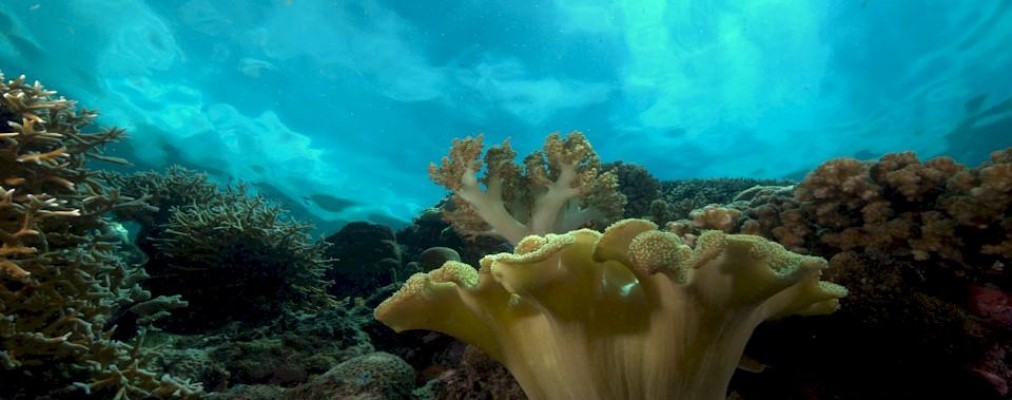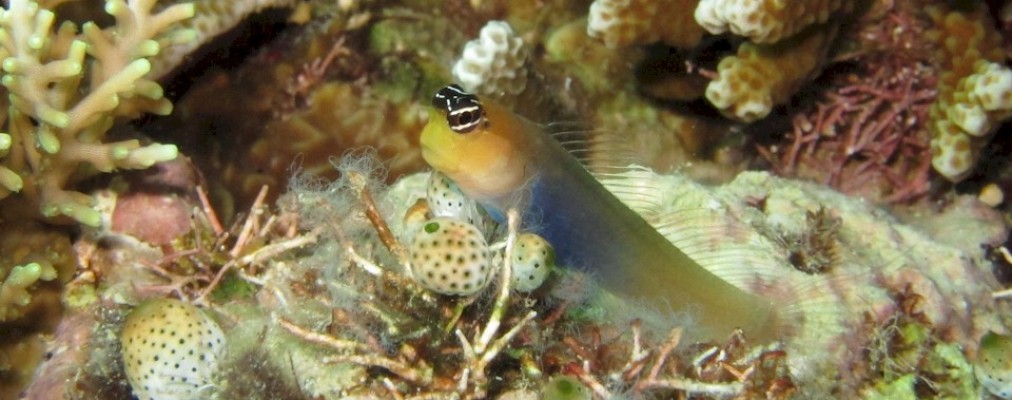Loading content - please wait...
Dive Sulawesi Coral Slopes in Gorontalo
To dive Sulawesi means diving pristine sites. This includes coral slopes found in Gorontalo. These dive sites are suitable for newer divers because currents are gentle. Also, the coral slope provides a bottom as reference. This is naturally missing when diving vertical walls. Underwater photographers who dive Sulawesi also love Gorontalo’s coral slopes. Divers do not have to fight the ocean to take great pictures. Here are two enjoyable slope dive sites.
West Point Dive Site
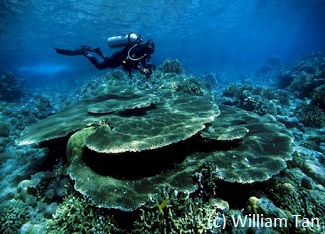
The reef flat of this large point is only a few meters deep. The portions of it that face into heavy waves are mostly rocky. Coral growth here is minimal. Below the reef rim a slope of hard corals that ends in a rocky flat at about 40 meters. The slope has various arms that shoot down from the reef flat. Those who dive Sulawesi enjoy searching for critters in the shallows of West Point.
Miguel’s Diving has not measured this site.
Depth: 2 – 30 meters
Highlights: sea fans, coral slope, comb blennies and several endemic species
Conditions: Visibility is typically 18 meters. The long shore current usually reverses itself during the course of a dive.
Virtual Dive Sulawesi at West Point
Descending below the moderate surface current, divers gather in a submerged cove. Nemo and his family greet everyone. A small Salvador Dali sponge stands out from a coral shelf. The deep blue ocean makes a perfect backdrop for those who dive Sulawesi to take photos. Several rainbow runners approach, ready to escort the visitors. Your dive guide signals. He has found a Pygmy seahorse. Nearby a Disk coralimorph as big as a dinner plate hides a single Cryptic shrimp.
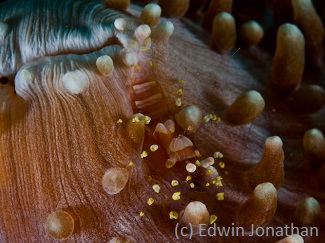
Swimming with the mild current, watch dozens of Pacific pyramid butterflyfish. They gather to feed on passing plankton. They are familiar sight to those who dive Sulawesi. A school of Yellow-dash fusiliers hurries to join them. Near a series of large Pink sea fans, a solitary Tasseled scorpionfish sits quietly. Your dive guide signals. He has found an Emperor shrimp on a Leopard sea cucumber. The shrimp’s orange and purple pattern confirms its royal splendor.
Now that the current has reversed, your dive guide turns everyone around. Immediately he finds a cute Blue belly blenny. It is a new species only found in Tomini Bay and not other dive Sulawesi locations. Several other endemic species call this slope their home. A Giant moray emerges from its hole, watching as you pass. On the reef flat pairs of Red fire gobies flick their tall dorsal fins. They warn the visitors not to approach. When your dive buddy does, they both jump into a hold to hide.
Otje Garden Dive Site
This charming dive site was an accidental find. Bad weather threatened to cancel a dive club’s last dive of the day. So, Miguel’s Diving staff tried this sheltered spot. The reef flat hosts a magnificent coral garden. It is very shallow and packed with sharp branching corals. Dense mature corals also fill the various coves of this site. Flats and arms extend down the coral slope. A few patches of white sand and coral rubble add to the variety. Miguel’s Diving typically uses this site as a third dive. We have not actually explored below 20 meters.
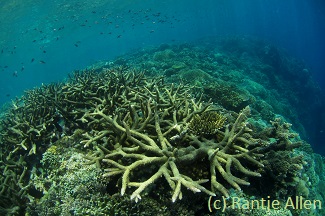
The site is about 250 meters long.
Depth: 1 – 20 meters
Highlights: beautiful corals, endemic species and schools of fish
Conditions: Visibility varies depending on wave action It also varies whether the long shore current is pushing the river water away or pulling it towards the dive site. Miguel’s Diving staff will not chose this site unless the visibility is at least 15 meters.
Virtual Dive Sulawesi at Otje Garden
Descend in blue water just off the reef. It is covered with branching corals so dense and shallow that back rolls cannot be done safely. Below you is a cove filled with mature Turban coral. Your dive guide points to a small school of active fish. They are Orange-back wrasse (Cirrhilabrus aurantidorsalis 1999). It is a species considered endemic to Tomini Bay where you are diving. Near a corner of the reef a family of Sarasvati shrimp (Periclimenes sarasvati 2002). They are waiting to clean passing fish. The largest shrimp has a clutch of pink eggs, visible through her transparent body. This is one of the new species found in Gorontalo.
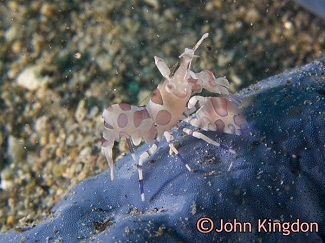
A crest in the slope leads to a wide coral plain. Below its edge, giant sponges grow off the coral wall. The current hits this area and schools of butterflyfish, fusiliers, triggers and anthias compete for position to feed on passing plankton. Among the rocks, a large Reef octopus watches as you pass.
At the end of the slope where the wall begins, the current is growing stronger. Your dive guide turns everyone around. But before drifting back towards the dive boat, he wants the everyone to see the Soft coral crab that he has found. Now that the divers are passing at a shallower level of the slope, everyone notices the lines of thousands of Bennett’s tobies passing in tight formation. Miguel’s Diving calls this rare phenomena “Magic Carpet.” Near the dive boat these tiny pufferfish are already spawning in patches of rubble.

